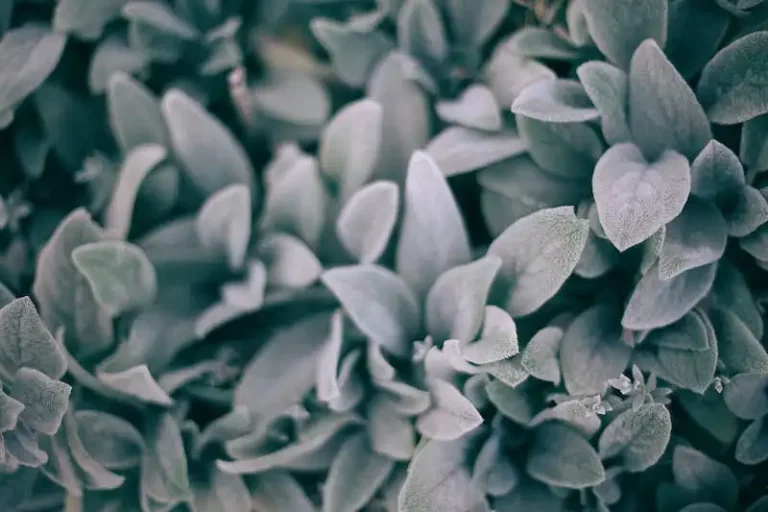One of the most effective ways to propagate clematis is through layering. This method involves bending a healthy, low-growing stem of the plant down to the ground, preparing a small hole for it, and then burying it within the soil. Once the stem has been immersed in the ground, it will send out new roots and form a new plant.
To prepare a stem for layering, make sure it is actively growing and has no signs of disease or damage. Choose a spot in your garden with rich, well-draining soil that receives plenty of sunlight. Clean a section of the stem just below a leaf node, taking care to make a sharp, clean cut.
After preparing the stem, dig a small hole in the chosen spot and make sure the soil is loose and moist. Gently bend the stem down into the hole and cover it with soil, leaving the tip of the stem sticking out above ground level. You can use a stick or a plastic support to keep the stem in place.
Once the stem has been buried and secured, all you need to do is wait. Over time, the buried stem will develop roots and the new plant will start to grow. This process usually takes several months, so be patient and continue to provide the necessary care and aftercare.
Another option for propagating clematis is through cuttings. To do this, take a softwood cutting from the greenest and healthiest stems of the plant. Dip the bottom of the cutting in rooting hormone to increase the chances of success. Plant the cutting in a pot filled with a well-draining soil mix, and place it in a warm, sunny spot. Keep the soil moist but not too wet, and wait for roots to develop.
If you prefer to start from seeds, collect the seeds from mature clematis flowers in early autumn. Sow the seeds in a pot or tray filled with seed compost and cover them lightly with soil. Place the pot or tray in a cool, dark spot and keep the soil moist. After 5 to 7 weeks, you should see the seedlings starting to emerge. Continue to care for them until they are strong enough to be moved.
Regardless of the method you choose, it’s important to provide proper care and aftercare to ensure the success of your propagated clematis. This includes regular watering, feeding with a balanced fertilizer, and protecting the plants from extreme heat or cold. With the right conditions and care, you can enjoy a mini clematis garden right in your own home!
How to Propagate Clematis From Cuttings in 7 Easy Steps
If you’re looking to propagate clematis plants, one easy and effective way is through stem cuttings. This method allows you to clone and grow new clematis plants that are identical to the parent plant. In this article, we’ll walk you through the steps to propagate clematis from cuttings.
Step 1: Choose the Right Time and Source
To increase the success of your propagation attempts, it’s important to choose the right time and source for the cuttings. The ideal time is in early spring when the clematis has just started producing new shoots. Look for healthy, disease-free vines that you can cut from.
Step 2: Prepare Your Cutting
Take a sharp knife or pruning shears and make a clean cut just below a leaf node. The cutting should be around 4-6 inches in length, with at least two sets of leaves. Remove any leaves from the bottom section of the cutting, leaving a few at the top. This will ensure that energy is focused on root production.
Step 3: Apply Rooting Hormones (Optional)
While not necessary, applying rooting hormones to the cut end of the stem can increase the chances of successful rooting. Simply dip the cut end of the cutting into the hormone powder or liquid, ensuring that it is well coated.
Step 4: Plant the Cutting
Fill a small pot with a well-draining potting mix or use a seedling tray filled with a mix of perlite and peat moss. Make a hole in the soil with a pencil or your finger and insert the cutting into it. Gently press the soil around the stem to secure it in place.
Step 5: Provide the Right Conditions
Place the potted cutting in a location that receives bright, indirect sunlight. Keep the soil consistently moist, but not waterlogged. To trap moisture, you can cover the pot with a plastic bag or create a mini greenhouse by placing a clear plastic container over the pot.
Step 6: Care for Your New Plant
Monitor the cutting regularly and keep a journal to track its progress. Be patient, as it may take several weeks for the roots to develop. Once the new plant has developed a healthy root system and a few new leaves, it can be gradually introduced to outdoor conditions.
Step 7: Plant Your Propagated Clematis
Once the roots have developed and the new plant is ready, it can be planted outside. Choose a sunny spot with well-draining, nutrient-rich soil. Clematis plants are climbers, so provide a trellis or other support for them to climb.
By following these 7 easy steps, you can successfully propagate clematis from cuttings and increase your garden’s clematis collection. Good luck!
About Clematis
Clematis is a striking flowering plant that can add a beautiful touch to any garden or outdoor space. With its vibrant colors and unique shape, clematis is a popular choice among gardeners.
When it comes to propagating clematis, there are a few key steps to follow. First, choose a level spot that receives at least 4-6 hours of direct sunlight each day. Prepare the soil by loosening it and adding organic matter to ensure good drainage.
To propagate clematis, you can use either softwood or hardwood cuttings. Softwood cuttings are taken from the new shoots in spring or early summer, while hardwood cuttings are taken from the current year’s growth in late fall or winter. It is important to make clean cuts and remove any leaves or buds from the bottom half of the cutting.
Next, prepare a propagation mix by filling pots with a well-draining, moisture-retaining material such as perlite or vermiculite. Dip the cut end of the clematis shoot into rooting hormone and insert it into the prepared pot, making sure at least two nodes are below the soil surface.
Once the cuttings are planted, provide them with regular watering to keep the soil moist but not waterlogged. You can also cover the pots with plastic bags or place them in a mini greenhouse to create a humid environment that will encourage root development.
Aftercare is essential for the propagated clematis. Keep an eye on the cuttings and remove any actively growing shoots that may compete with the new root development. Once the roots have formed and the plants are actively growing, you can start transplanting them into their final spots in the garden.
By following these steps, you can propagate clematis and enjoy the beauty of this vigorous vine in your own garden.
How to Propagate Clematis by Cuttings
To propagate clematis by cuttings, you’ll need to choose a healthy clematis stem for cutting. The stem you choose should be at least five nodes long and preferably above ground level.
1. Begin by selecting a stem from a well-established clematis plant. Clean your cutting tools to prevent the spread of disease.
2. Make a clean cut just above a leaf node on the stem you’ve chosen. Remove any leaves or flowers from the bottom two-thirds of the cutting, leaving at least two sets of leaves near the tip.
3. For best results, dip the bottom of the cutting in a rooting hormone powder. This will help encourage root growth.
4. Prepare a suitable planting medium, such as a mixture of equal parts peat moss and perlite. Moisten the medium to the right level of moisture and make a hole in the medium. Insert the cutting into the hole, making sure the lower two-thirds are covered. Firmly press the medium around the cutting to hold it in place.
5. Place the potted cutting in a spot that receives bright, indirect sunlight. You may choose to provide some shading to prevent the cutting from wilting.
6. Throughout the rooting process, make sure to keep the medium moist but not waterlogged. Mist the cutting occasionally to maintain humidity.
7. After about four to six weeks, check for signs of root growth by gently tugging on the cutting. If you feel resistance, roots have likely formed.
8. Once the cutting has rooted, leave it in the pot for the next growing season to allow it to establish a strong root system.
9. Next spring, you can either continue growing the clematis in the pot or transplant it into the ground. If transplanting, choose a sunny spot with well-drained soil.
By following these steps, you can propagate clematis by cuttings and enjoy more of these beautiful flowering plants in your garden.
Step 1 Choose Your Vines
Before propagating clematis, it is important to choose rooted, high-quality vines. Look for vines that are healthy and free from any signs of disease or pests. It’s a good idea to buy from reputable growers who specialize in clematis plants.
When selecting vines, choose those that are actively growing and have green, healthy foliage. Avoid vines that have roots that are soggy or brown, as this could indicate rot or other problems.
There are several options for taking cuttings from clematis vines:
- Taking cuttings in the spring from new growth
- Taking cuttings in the fall from semi-ripe wood
- Transplanting small, well-rooted clematis plants
- Collecting seeds from mature clematis plants
For the purpose of this step, we will focus on taking cuttings in the spring from new growth.
When selecting vines for cuttings, look for stems that are about 3 to 5 inches long. Choose stems that are green, smooth, and healthy-looking. It’s also important to make sure the stems have formed leaves. This indicates that they are actively growing and have a higher chance of success when propagated.
Once you have selected your vines, prepare a clean and sharp cutting tool. Make a clean cut just below a leaf node. This will provide the best chance of rooting when the cutting is placed in soil.
After taking the cuttings, it’s important to look after them properly. Keep the cuttings in a warm and well-lit area, but avoid direct sunlight. Make sure the soil is well-draining and rich in nutrients. Water the cuttings regularly, making sure the soil is evenly moist but not soggy.
By following these steps and providing appropriate aftercare, your clematis cuttings should root and begin forming new plants within about 4 to 6 weeks. After this time, they can be transplanted into larger containers or into the garden.
Choosing the right vines and taking cuttings at the appropriate time is essential for successful propagation. With a little care and attention, you can propagate your clematis and enjoy the beauty of these stunning vines in your garden.
Step 2 Take and Prepare Several Cuttings
To propagate clematis, there are different methods you can try, one of which is taking cuttings. This step is crucial to successfully propagate the plant. Here’s how you can do it:
1. Selecting the Cuttings
Start by selecting healthy shoots from the parent plant. Look for shoots that are larger and have a good foliage. Make sure to choose shoots that are strong and disease-free.
2. Cutting the Stem
Take a sharp, clean knife or gardening shears and cut the shoot just below a node. The node is the area where the leaves or buds emerged from. Make the cut on a slant and ensure that it is clean and not jagged. This will increase the surface area for the cuttings to root.
3. Preparing the Cuttings
Remove any leaves from the lower half of the cutting. Leave only the greenest and healthiest leaves at the top. If the remaining leaves are large, you can thin them out to reduce water loss through transpiration.
4. Applying the Hormones
If you want to increase the chances of successful rooting, you can use rooting hormones on the cuttings’ ends. This is not necessary but can make the process easier. Dip the wounded ends of the cuttings in rooting hormones by following the instructions on the packet.
5. Planting the Cuttings
Prepare small pots with a well-draining and rich soil mixture. Moisten the soil lightly and make a hole in the center using a stick or your finger. Insert the cuttings into the holes and gently press the soil around them to secure them in place.
6. Providing the Right Conditions
Place the pots outside in an area where they receive about five hours of sunlight daily. Keep them moist, but avoid overwatering as this can cause the cuttings to rot. You can cover the pots with plastic wrap or a clear plastic bag to create a mini greenhouse effect and increase heat and humidity.
7. Transplanting and Continuing Care
After a few weeks, check for root formation by gently tugging the cuttings. If you feel resistance, it means they have rooted and can be transplanted into larger pots or directly into the ground. Continue to care for the cuttings by watering lightly and providing them with adequate sunlight.
By following these steps, you’ll be well on your way to propagating clematis successfully. Remember to be patient and practised in your propagation techniques, and soon you’ll be able to enjoy the beautiful and flowering clematis plants you’ve started from cuttings!


